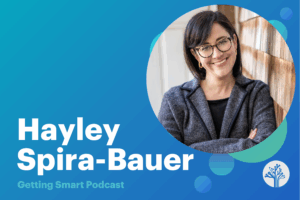Four Classroom Strategies for Integrating Critical Thinking and Kinesthetic Learning

By Sandra L. Love, Ed.D.
There was a time when teacher-centered learning, or “sit and get,” was the classroom norm: the teacher would stand in front of the classroom lecturing, hoping students were “getting” something out of the lesson.
As a former administrator, I prefer a more student-centered approach. It has been said, “Learning is more effective when it is an active rather than a passive process,” and I couldn’t agree more.
Recently, I had an opportunity to co-present a session, “Fusing Critical Thinking with Kinesthetic Learning,” during Critical Thinking LIVE, a one-day professional development conference for educators. Kinesthetic learning is defined as learning through physical movement versus static lectures or through the observation of demonstrations.
This style of learning places a great deal of emphasis on the connection between movement and cognitive abilities and motor skills. In essence, it gets students out of their seats and engages them in moving and interacting with peers while learning. This approach shifts the classroom from a teacher-centered environment to a more engaging student-centered experience.
Following are four highly effective classroom strategies that fuse critical thinking with kinesthetic learning. Each strategy is designed to spur dialogue, get the oxygen pumping and make the lessons much more dynamic. In particular, struggling learners can benefit from these strategies as they can become frustrated and restless during challenging lessons.
Any of these strategies can be applied to a variety of subjects including music, math, arts, science and English language arts. (Remember, before implementing any form of kinesthetic learning, consider the physical layout of the room and your students’ needs).
Strategy No. 1: Four Corners
Using the Four Corners strategy, students move to one corner of the room based on their responses to a question. Each corner represents an answer choice. Once the purpose of the strategy is explained to the class, pose a thoughtful question, then provide time for individual thought and reflection before allowing students to move to a corner of choice (three corners will also work). Students will discuss and justify their selected responses with others standing in the same corner. Following discussions, students are invited to share with the entire class. Often, students hear evidence that convinces them to change their thinking.
The Four Corners strategy promotes deeper discussion, reflection and analysis among students.
Strategy No. 2: Consensogram
Begin by posing a question, with students rating on a scale ranging from “never,” “seldom,” “sometimes,” “always.” Direct students to use sticky notes or colored dots to transfer their ratings to a scale on chart paper before forming small groups to examine the data and discuss conclusions. Conclude the lesson by conducting a class discussion. Some questions that might lead the discussion include, “What observations can you make about the data?” “What patterns are noticeable?” “What surprises you?” “What conclusions might you draw?”
This strategy provides an excellent opportunity for helping students uncover evidence to support their opinions, encouraging them to make sound, well-reasoned arguments for or against an issue.
Strategy No. 3: Vocabulary Building
Present a statement, identifying the vocabulary term or phrase you want the students to demonstrate via movement. Have students choose one of three activities (use hand gestures, form a group statue, or create a model) to demonstrate the identified vocabulary. After small group collaboration, have the students share and debrief with the class.
In addition to getting students out of their seats and moving, the Vocabulary Building strategy strengthens the development of word associations, which becomes particularly important for college and career readiness.
Strategy No. 4: Human Continuum
For this strategy, start by identifying the text or topic of discussion, usually a question or dilemma meant to stir debate, such as, “Is torture ever justified?” Record students’ initial reactions and then have them to move to locations along the continuum that indicates their agreement or disagreement with the statement. While students stand on the continuum (an imaginary line that stretches across the room), have students turn to others nearby and justify their positions. Conclude the lesson by conducting a discussion involving the entire class.
The Human Continuum Strategy helps students examine if they made a decision on their own or it they were influenced by their friends. As we know, students can sometimes be prone to jumping on the bandwagon because they fear giving the “wrong” answer.
When used appropriately, fusing critical thinking with movement can make for a powerful learning tool. As students move, discuss, reflect, and analyze, learning becomes active, with the student-centered experience compelling students to dig deeper into the content while enjoying the learning process and building their confidence.
For more, see:
Dr. Sandra L. Love is Director of Education Insight and Research at Mentoring Minds. Follow them on Twitter: @mentoringminds
Stay in-the-know with all things EdTech and innovations in learning by signing up to receive the weekly Smart Update.






0 Comments
Leave a Comment
Your email address will not be published. All fields are required.